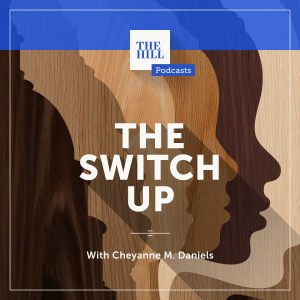The suburban voter strategy isn’t as black and white as it used to be

In our polarized politics, “the suburban voter” is a cherished prize. Biden’s victory in 2020 and the Democrats’ midterm gains in 2022 have been widely attributed to suburban voters turned off by President Donald Trump and the election-denying and culture warring of MAGA-supporting Republicans, who have since turned their focus to the racially-coded specter of crime and immigration as a means of winning these voters back.
Partisan competition for suburban votes raises an important question: What exactly is the American suburb in 2024? Is it the home of cosmopolitan, tolerant and well-educated liberals? Or is it an anxious enclave of white resentment?
For the answer, one must first understand the history of the American suburbs, which began in earnest with the housing boom of the 1920s. In this era, modern building and zoning codes were in their infancy, and most new construction spilled out onto unincorporated tracts on the outskirts of cities.
As a pitch to prospective buyers and “protection” against neighborhood change, developers attached constraints to each sale. They prohibited “nuisance” uses of property such as slaughterhouses, junkyards and saloons. Foremost among these restrictions, was the provision that properties could not be owned or occupied by anyone “not wholly of the Caucasian Race.” Such restrictions also included the kind of terms that we now find in building codes or homeowners association bylaws: elaborate rules regarding land use, occupancy, building design and placement, shrubbery and fences.
The practice of private restriction decisively segregated the American city — especially in the industrial Midwest. It invented and elaborated the conviction that occupancy by “inharmonious racial groups” destroyed property values. Because local taxes fund local services, it extended the advantages and disadvantages of segregation into the public sector, especially education.
All of its logic and assumptions were incorporated into local zoning and planning, state regulation of municipal incorporation and annexation and the notorious architecture of federal “redlining.” Public policy not only failed to challenge the practice of racial restriction, it cemented and sustained it.
The segregation invented in the 1920s is still very much with us, propelled forward by public policies, the racial wealth gap and persistent (and persistently racial) assumptions about good neighborhoods and bad. That legacy yields not a single “suburb” but many — ranging from struggling and aging inner suburbs, to exclusive gated communities on the exurban fringe. And it yields not a monolithic “suburban voter” but a bewildering variety.
In some settings, the logic of segregation has scarcely changed. In Milwaukee, for example, the suburbs were a sandbox for private restriction in the era of the Great Migration. Today, as the city finds itself at the heart of one of the most important swing states, the color line remains indelible at its edge. Black-white segregation is uncannily reflected in Milwaukee’s polarized politics, stubbornly red in the suburbs and blue in the city itself.
More commonly, as in metropolitan St. Louis, the inner suburbs began as bastions of white flight built on a foundation of private restriction. But in the long run, white residents fled the inner ring as well.
African Americans, displaced by neighborhood collapse and public policy, and impoverished by their exclusion from the first generation of federal housing subsidies, filtered into homes and apartments in these “second-hand suburbs.” These citizens — troubled by aging infrastructure, declining property values, thinning public goods and often predatory policing — scarcely register on the radar of party strategists pursuing the “suburban” vote.
Of course, white voters in or near such places are those that Trump has in mind when he invokes the image of the suburbs as a refuge from the crime-ridden city. The strongest support for Trump and his ilk comes from high-income, white homeowners in rapidly growing outer suburbs who are dismayed and threatened by the growing racial, ethnic and economic diversity of their once-exclusive neighborhoods.
That most conventional and familiar electoral prize, the white “swing” voter in affluent (and racially homogenous) suburbs, is something of a riddle. Such voters might be socially and culturally liberal, and even persuadable on some redistributive economic policies. But they are also deeply invested in the segregation and exclusionary housing policies — and all the advantages that flow from them — first set in motion by private racial restrictions a century ago.
This is the danger of the “suburban” strategy. If Republicans can tap deeply enough into anxieties about suburban exclusion and demographic change, they can trump the cultural and social liberalism promised by the suburban vote. If Democrats win on the latter, they will — at worst intentionally and at best inadvertently — embrace the inequality, exclusion, segregation and exploitation that is such a persistent and central feature of American cities and their suburbs.
Colin Gordon, Ph.D. is a professor in the Department of History and a distinguished faculty affiliate in the Public Policy Center at the University of Iowa.
Copyright 2023 Nexstar Media Inc. All rights reserved. This material may not be published, broadcast, rewritten, or redistributed. Regular the hill posts







